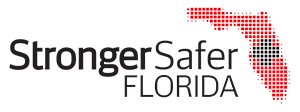
A new report released by the University of Florida Engineering School of Sustainable Infrastructure and Environment recommends voluntary building enhancements that would exceed the current requirements of the Florida Building Code. These enhancements would reduce property and economic losses following hurricanes and severe storms. The report was commissioned by the Florida Department of Business and Professional Regulation.
The purpose of the report was to provide Florida residents with enhanced design options for their homes to mitigate against the future risk of hurricane-related building damage. The public may not understand that the provisions in the Florida Building Code are simply a minimum standard that must be met, and as consumers, they are encouraged to build to higher standards.
Two main reasons for building enhancements were addressed: 1) areas subject to flooding and storm surge; and 2) improving wind resiliency and protecting against water intrusion.
Changes in future flooding are expected to increase the frequency and severity of coastal storms and rainfall events. This will result in deeper flooding, larger affected areas, changes to waves and changes to groundwater. To mitigate these impacts, the report recommends:
- Requiring site-specific designs prepared by registered design professionals
- Building higher than required in flood hazard areas; limiting enclosures below elevated buildings
- Limiting the use of fill to preserve flood storage and avoid drainage problems
- Designing buildings on erosion-prone and high-risk areas to be moveable
Additionally, the report addressed improving the wind resiliency of building components such as roof coverings, wall coverings, windows and doors. Improvements to these components would also protect against water intrusion which can lead to the saturation of attic insulation, water seepage into walls, damage to finishes and furnishings and algae and mold growth. Some of the recommendations to address these areas include:
- Requiring roof sheathing to be attached with roof sheathing ring shank nails
- Requiring a minimum of 19/32 inch plywood for roof and wall sheathing
- Requiring the use of roofing cement for asphalt shingles
- Requiring vinyl siding to be installed over wood panel sheathing
- Requiring fiber cement siding to be face-nailed
- Requiring a sealed roof deck under all roof coverings
Recommendations included in this report were drawn from well-recognized sources, including: Federal Emergency Management Agency, Insurance Institute for Business and Home Safety, Florida’s Hurricane Research Advisory Committee, Florida Sea Grant and Florida Department of Environmental Protection.
The 2018 U.S. Census Bureau estimated Florida has 9.5 million single-family residential houses and more than half of those homes are considered vulnerable to extreme winds because they were built prior to the implementation of the Florida Building Code in 2002. Building or retrofitting to a higher standard will reduce a structure’s vulnerability and can potentially reduce or minimize wind and storm surge damage.
According to the National Institute of Building Science, research at the state and federal levels has demonstrated substantial benefits of strengthening houses. In one study, for every $1 spent on structural retrofit, a homeowner could avoid up to $6 in future storm damage.
For a full copy of the report, visit http://bit.ly/2RDuzfJ.
Stronger Safer Florida is a nonpartisan coalition comprised of businesses, consumer and environmental groups from throughout Florida. This diverse membership seeks to protect consumers before, during, and after catastrophic events impact Florida.
